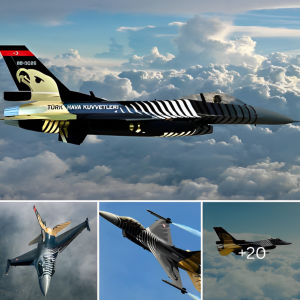The T-14 Armata next generation battle tank has for years promised to revolutionise the armoured warfare capabilities of the Russian Army, and following its unveiling in 2015 the tank was reported to have entered mass production in August 2020 several years behind schedule.
The T-14 is widely considered the most capable platform of its kind in the world, and depending on the definition may well be the world’s only fourth generation battle tank. Some of its most notable features include a remote control turret, an armoured crew compartment for maximum protection, radar systems and 360 degree cameras for high situational awareness, and armour protection far exceeding that of any known production tank and including the new Malachit explosive reactive armour.
The T-14’s 2A82-1M gun has an unrivalled rate of fire and was built to deploy Vacuum-1 rounds an estimated 1000mm penetrative capacity, which has no near peer rivals among other tanks in the world. The tank’s firepower and extremely 12km long engagement range provide a very comfortable advantage over Western rivals.

T-14 Armata Battle Tank
While the T-14 is extremely capable, delays to production and a focus on modernising older tank classes such as the T-72 and T-90 ultimately meant that it was not available to participate in Russian military operations in Ukraine initiated on February 24.
This was potentially a missed opportunity to test the tank’s capabilities particularly considering the extreme focus on Russian ground warfare capabilities, since the Air Force and Navy have played only a limited role in operations. Even if the T-14 were fully combat ready and fielded in significant numbers, however, it potentially would not have had a meaningful impact on the campaign in Ukraine for a number of reasons.
The first is that the Russian Army has refrained from deploying even medium-end tanks to Ukraine, and has relied almost exclusively on the T-72B3 which is its cheapest and lowest end modernised tank. With Russia showing no intention of deploying its best armour to the theatre, had the T-14 been in service it is unlikely it would have similarly not been deployed.

Ukrainian T-64 Tank
Had the T-14 been available, and the Russian Military chosen to deploy it, it may not have made any significant difference against Ukrainian armour particularly if its less capable counterpart the T-90M had been deployed in its place.
The Ukrainian Army’s lack of modern battle tanks left its reliant on obsolete T-64 and T-72A tanks from the 1970s, which not only lack modern sensors or any form of thermal sights, but also have extremely weak base armour and use obsolete BM42 Mango Soviet era rounds with just 450mm penetration at 2000m ranges against homogenous armour.
These rounds are totally incapable of penetrating any Russian tank’s frontal armour, even the T-72B3, and would make the extremely heavily armoured T-14 arguably ‘overkill.’ The T-14’s Vaccum-1 and other rounds would also arguably be wasted against such targets, with older tanks very comfortably capable of neutralising Ukraine’s 1970s armour without support.

Where the T-14 may well have been more useful was for crossing large swathes of territory quickly due to its high endurance and mobility, and in surviving against Ukrainian infantry armed with American Javelin anti tank missiles which are used as an asymmetric asset to destroy superior Russian armour.
The Javelin would be unable to penetrate the T-14, potentially saving the lives of crews, while the tank would be better optimised than T-72B3 to neutralising infantry at long ranges using specialised new anti infantry rounds. With Russia having refrained from deploying the T-90M, however, which is also highly survivable even against Javelins, the lack of T-14s may not be a game changing loss for its ability to project power into Ukrainian territory.





